— Permacrafters gets commissions for purchases made through links in this post. We encourage you to prioritize secondhand goods whenever possible. —
‘How might one clean with ash?’, you might ask. It’s certainly not by sprinkling fire pit ash on your clothes, but close. Hardwood trees like oaks, chestnuts, fruit trees, and acacias are actually high in potash content. Potash, which is potassium carbonate, is an ingredient sometimes used in soap production. It dissolves grease, acts on most stains, is gentle on clothes, and has absorptive properties. There are multiple ways to use wood ash for cleaning purposes. You can 1) extract the potash with water and use this liquid to wash your clothes, 2) make soap by adding animal fat or vegetable oils to this liquid, 3) mix ash and water to polish silverware, or 4) remove paint stains with ash and a hard brush.
The environmental impact of using these hardwood trees for cleaning purposes and soap making is close to zero, so long as you are repurposing ash that otherwise would have been discarded. You can use hardwood ash from your chimney or from a fire pit to make wood ash laundry cleaner.
Here’s how to make wood ash laundry cleaner:
Materials:
- Gloves
- Hardwood ash (a lot)
- Tub to collect ash
- Sieve
- Large bowl
- Water
- Reusable tea filter or nut milk bag (or single-use coffee filter, if that’s all you have)
- Large plastic container (using glass may be a safety risk)
- Essential oils (optional). We recommended Aromatics International.
Steps:
- Put protective gloves on (to avoid skin irritation)
- Collect ash in a large tub. WARNING: Don’t burn yourself. Ash can look deceivingly cool. It can actually remain hot for over 12 hours after a fire goes out.
- Sift ash into a large bowl until you’ve collected 4 cups of sifted ash. WARNING: Make sure to do this outdoors, and potentially with a mask in case you are sensitive to the ash particles.
- Add 9 cups of water. Mix.
- Let it steep for 24 hours to extract the potash, mixing occasionally if possible.
- Filter the ash water into a large plastic container. It will feel soapy.
- Label the plastic container before placing in the fridge. Compost the leftovers.
- The liquid will keep for several months in the fridge.
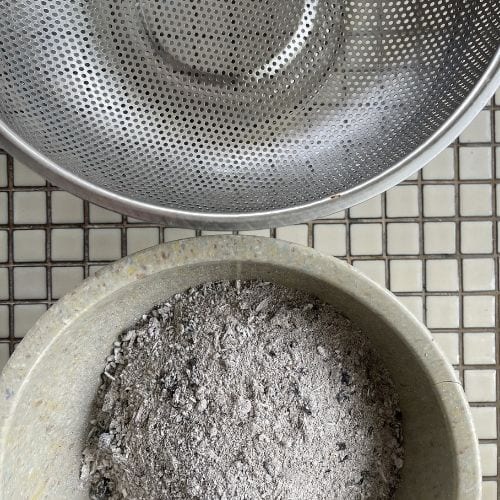
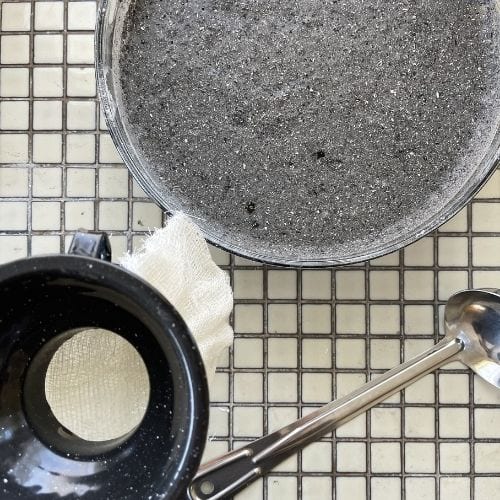
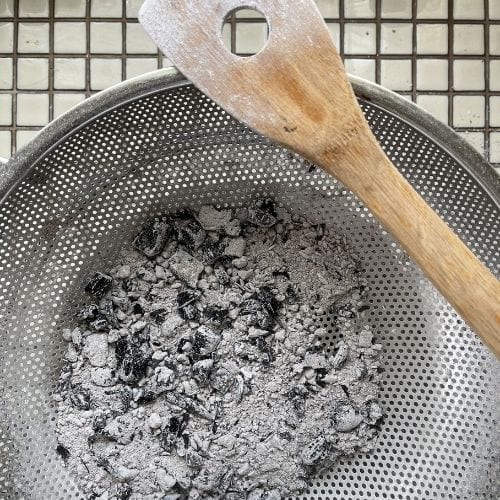
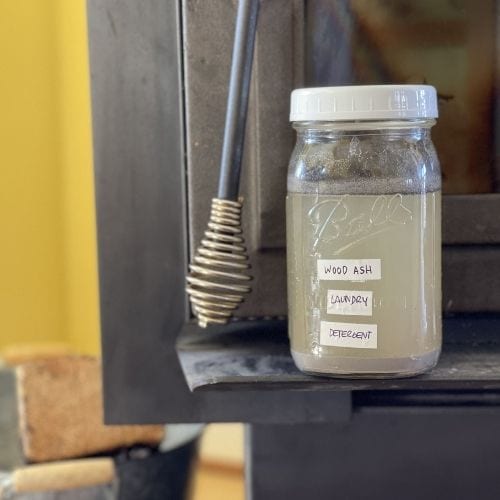
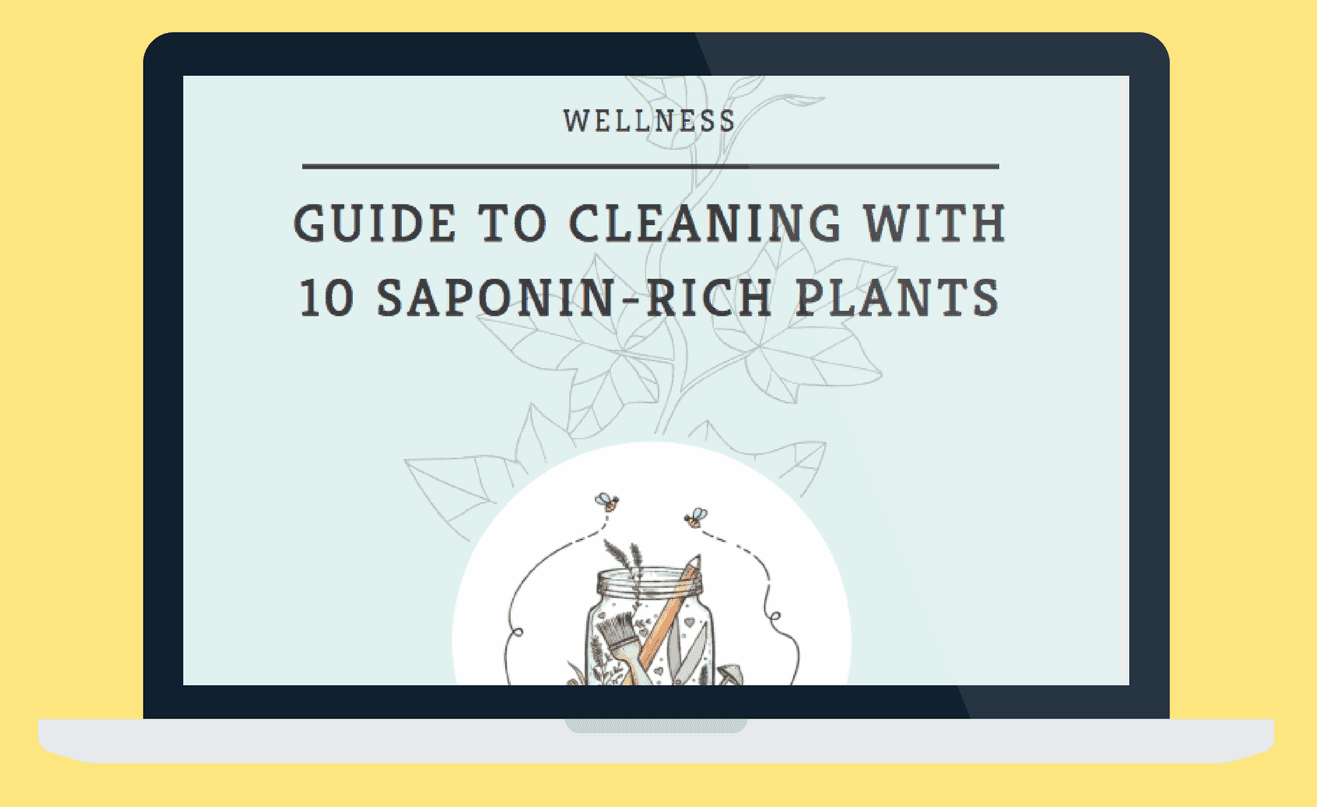
Thirsty to discover what other plants you can forage for or grow to make natural laundry detergent?
To use:
- Use ¾ cup to 1 cup per load of laundry. If hand washing, wear gloves as the potash may irritate or dry your skin.
- You may also add drops of essential oils (such as lavender).
So, what’s the verdict? We were surprised to discover that it actually does clean well! However, it is not ideal over the long term for white clothes, because their colors will fade (…in which case you can attempt to revive the white colors with sodium percarbonate or washing soda!).
Next time you’re stranded in the woods with sweaty clothes, you’ll know just how to put that campfire ash to good use! Because cleaning your clothes while lost in the woods is the most useful survival skill.
Let us know what you think of this wood ash laundry cleaner and whether you’ll be sharing the recipe with your friends! Do you love these cleaning tips? Learn more about off-the-grid recipes and even super easy & convenient green cleaning recipes in our online course Conscious Cleaning 101.
Enjoy that campfire & don’t burn yourselves!
xoxo,
Christelle
3-Day Green Cleaning Challenge

Join our FREE 3 day green cleaning challenge to make your own DIY products. Start your journey to a healthier home & planet!
By commenting you accept our Privacy Policy.
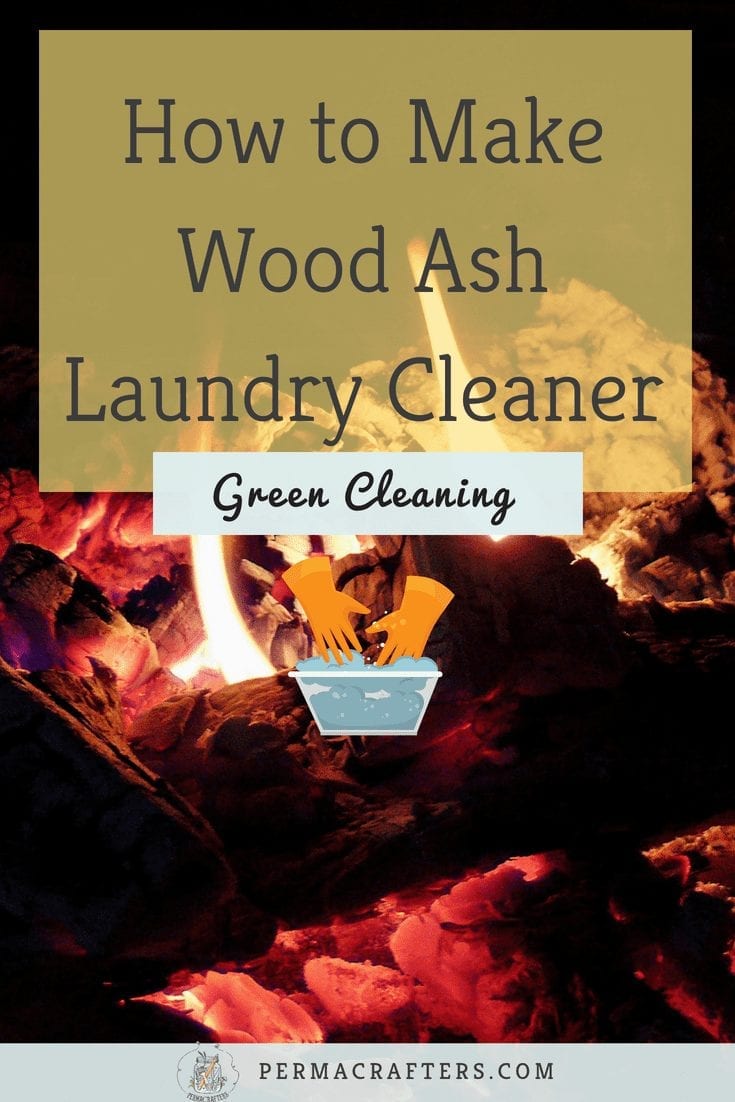

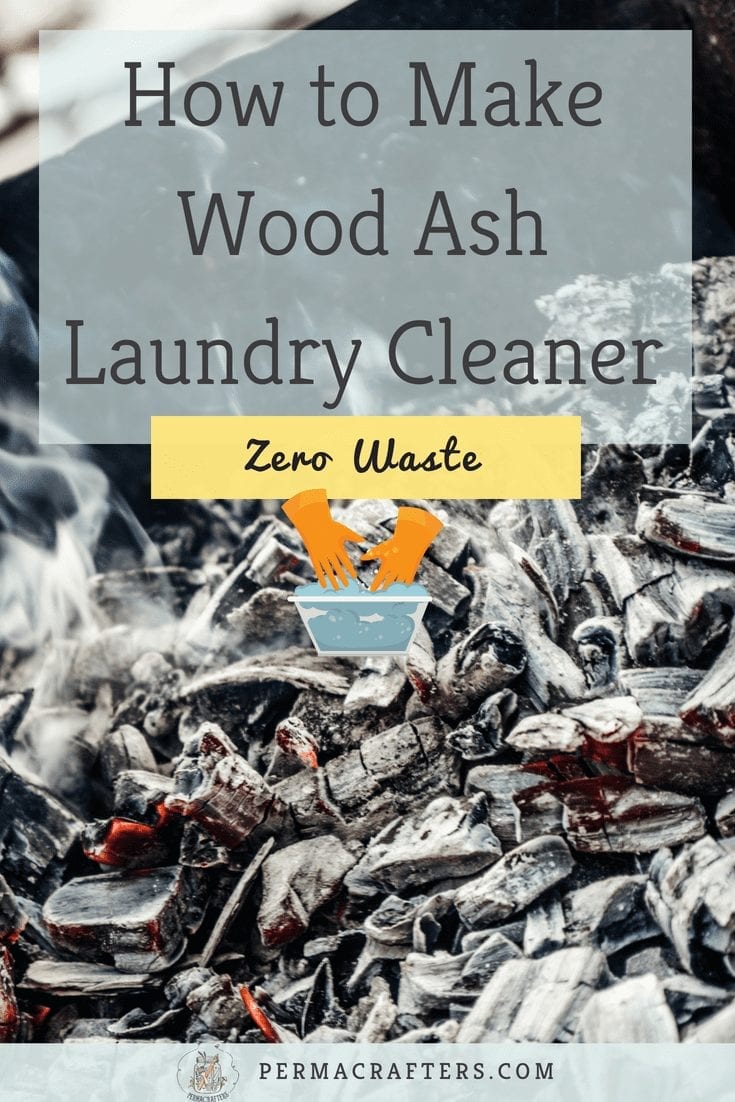
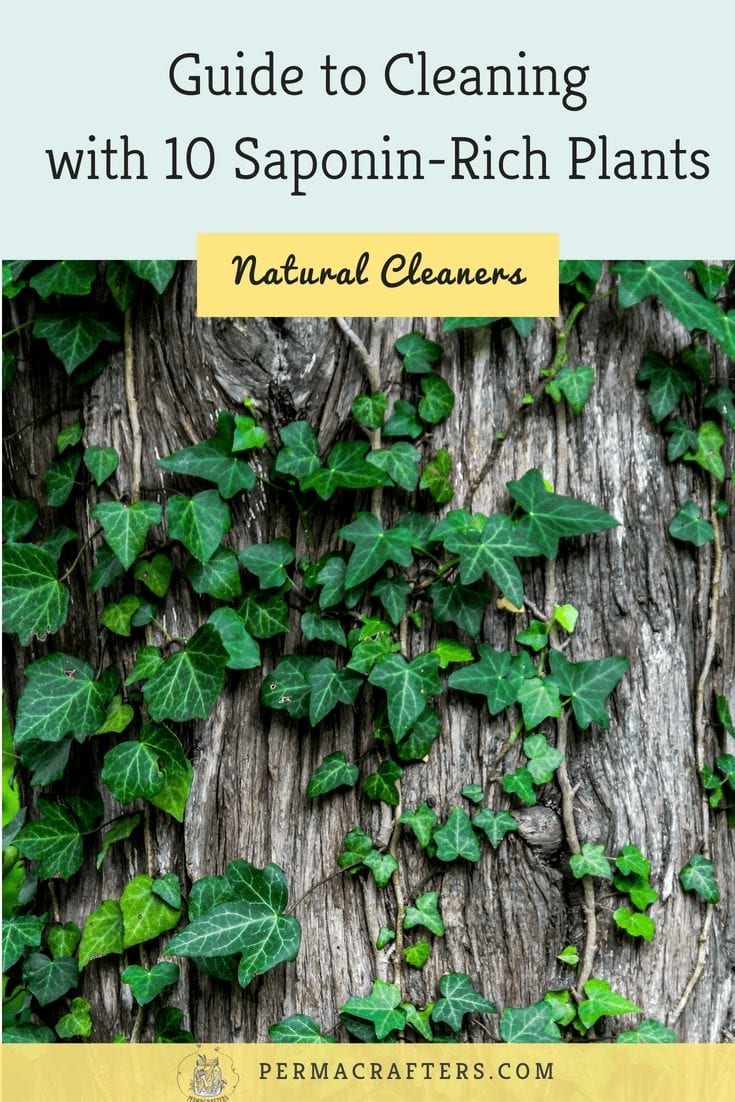



0 Comments
Trackbacks/Pingbacks